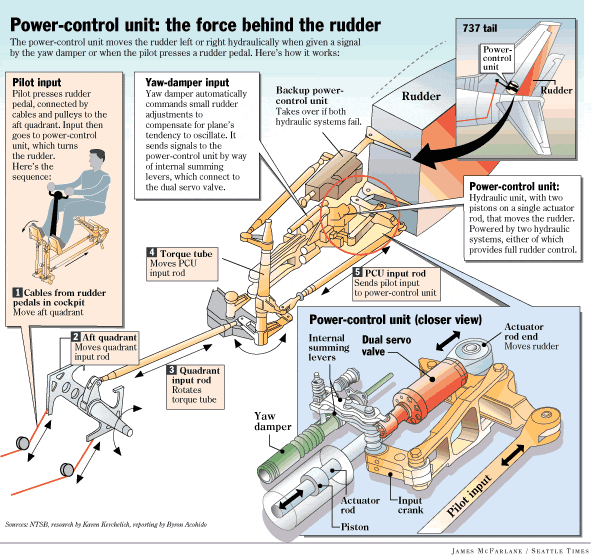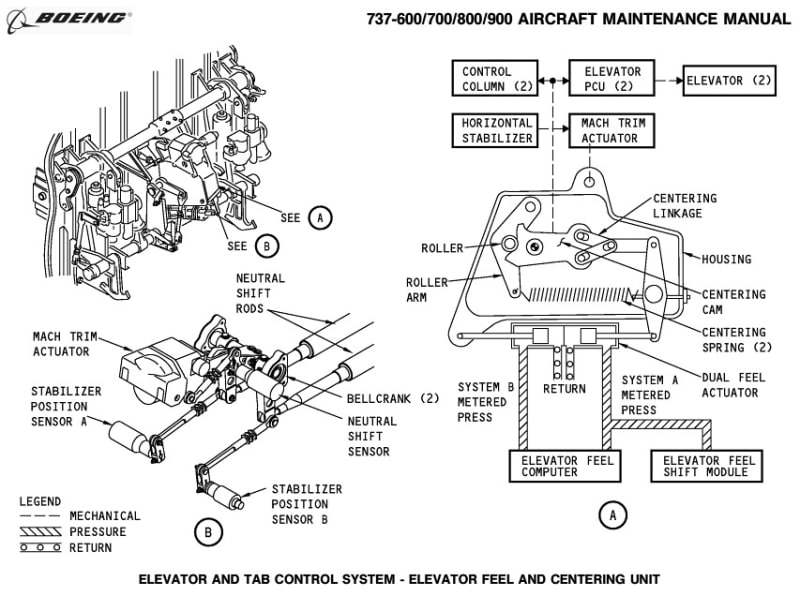"FAA head says Boeing 737 MAX will return to flight, but timetable is uncertain
May 22, 2019 at 5:00 pm Updated May 22, 2019 at 8:09 pm
Dominic Gates By Dominic Gates
Seattle Times aerospace reporter
FORT WORTH, TEXAS The head of the Federal Aviation Administration (FAA) on Wednesday insisted theres no fixed schedule for lifting the order that has grounded Boeings 737 MAX since March 13.
It takes as long as it takes, said Acting FAA Administrator Dan Elwell. The 737 MAX will fly again when we have gone through all of the necessary analysis to determine that it is safe to do so.
If it takes a year to find everything we need to give us confidence to lift the order, then so be it, he added. Im not tied to a timeline.
Though the plane could still potentially return to service in the U.S. as early as August, that fast-track schedule privately suggested last month by both Boeing and the FAA may have been delayed by technical hitches and by public unease.
Ahead of Thursdays meeting of top officials from civil aviation authorities around the globe to discuss whats needed before the MAX can fly again, Elwell said Boeing has still not submitted its final proposed software fix for the flight-control system that erroneously activated on Lion Air and Ethiopian Airlines 737 MAXs and led to two deadly crashes despite Boeings announcement last week that the software fix was completed.
An FAA spokesman on the sidelines of the meeting said the safety agency has a clear idea of the main elements of Boeings fix and knows the steps that need to be done to certify and validate Boeings work. How long those steps will take remains fuzzy.
Daniel Elwell, the acting administrator of the Federal Aviation Administration. Daniel Elwell, the acting administrator of the Federal Aviation Administration.
Elwell said Boeing had earlier committed to deliver its software fix on March 26, but at the last minute decided it needed to make adjustments after an independent internal Boeing review found problems that needed to be addressed.
Fifty-seven delegates representing civil aviation authorities in 33 countries have gathered for the meeting Thursday at the FAAs southwest regional office in Fort Worth including officials from Indonesia and Ethiopia, the two countries leading the investigations into the two fatal MAX accidents that killed 346 people.
We will be sharing with them the safety analysis that will form the basis for our return-to-service decision, Elwell said.
At his side during the press briefing was Ali Bahrami, the FAAs head of aviation safety, who called this a very extensive review of Boeings software fix.
Elwell was asked how this safety analysis will be done differently than the FAAs safety analysis of the original flight-control system, an analysis that, as the Seattle Times reported in March, was largely written by Boeing engineers and missed several crucial flaws that are now being fixed in the software update.
He responded only by saying that during the MAXs initial certification the FAA followed the same proven procedures that have been used for 50 years.
The FAA has confirmed that among other issues, the original safety assessment, as detailed in the March Seattle Times story, did not take into account an increase in the authority of the problematic flight control system, called MCAS (Maneuvering Characteristics Augmentation System).
Boeing found during flight tests that for certain flight conditions, it needed to allow MCAS 2.5 units of movement instead of 0.6, quadrupling its power to move the jets tail and push the its nose down. Many FAA technical staff who worked on the MAX were never made aware of this change, and the system safety assessment done during original certification was never updated to include it.
An FAA spokesman said that the higher authority was designed only for high angle of attack, low-speed turns, and that the change to MCAS didnt trigger an additional safety assessment because it did not affect the most critical phase of flight, considered to be higher cruise speeds.
However, at a crucial moment during the doomed Ethiopian flight, MCAS moved the tail 2.5 units and pushed the nose drastically down, even though the aircraft was moving at higher than normal speed.
The politics of getting international consensus as well as restoring the confidence of the traveling public may prove lengthy.
Elwell conceded that there may be a crisis of public confidence in Boeings jet right now, but said that the longstanding and proven processes of his agency that have produced the unrivaled U.S. aviation safety record over the past two decades will restore that lost confidence over time.
Im not worried about the future of public confidence, because Im not worried about the future of aviation safety. Elwell said.
He described the purpose of the international meeting as information sharing, so that a consensus may emerge.
The idea is that we are working globally from the same sheet of music, Elwell said. So that when we are ready to lift the prohibition (on the MAX flying), theres absolutely no question in any countrys mind why we are doing it and how we got there.
He said the FAA will explain our understanding of the risks that need addressed, the steps we propose to address those risks and how well propose to bring the 737 MAX back into service.
Though the U.S. safety agency typically takes the lead in the aviation world, consensus could be elusive after regulators in other countries decided to move first in grounding the plane and then learned of flaws in the FAAs certification processes.
Countries such as China have indicated that they want to study the safety of the new system for a longer period and do their own assessment of it rather than just following the FAA.
Its unclear if the FAA would move forward without key players on its side, including the European Union Aviation Safety Agency (EASA) and the Canadian civil aviation authority. But Elwell seemed to suggest that the US will take the lead and move first.
Because the U.S. is where the MAX was designed and issued its initial certification, which was then separately validated by regulators around the world, the ungrounding of the aircraft must follow a similar pattern, Elwell said. When its analysis is complete, the U.S. will certify the fix and lift the grounding, then other countries must validate the FAAs work and make their own decisions, he said."
On a separate note this is what's going round in the pilot circles in Europe.


